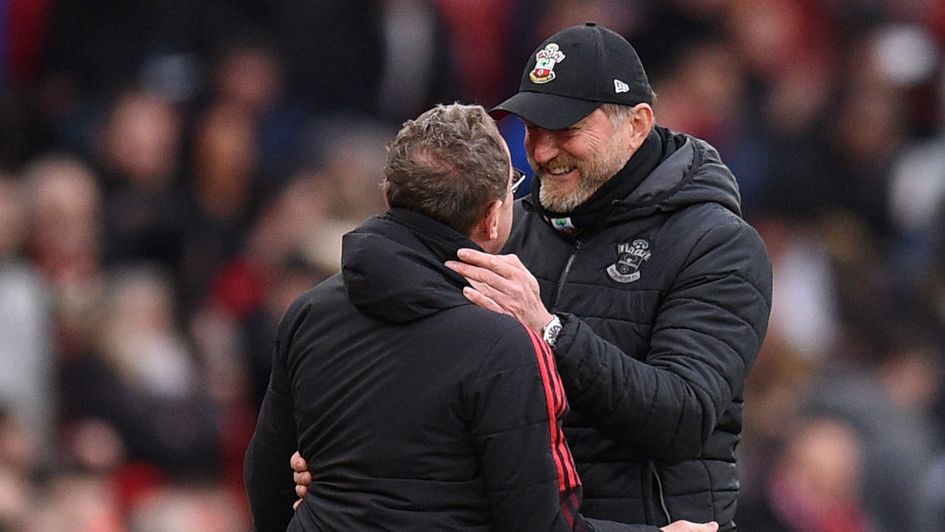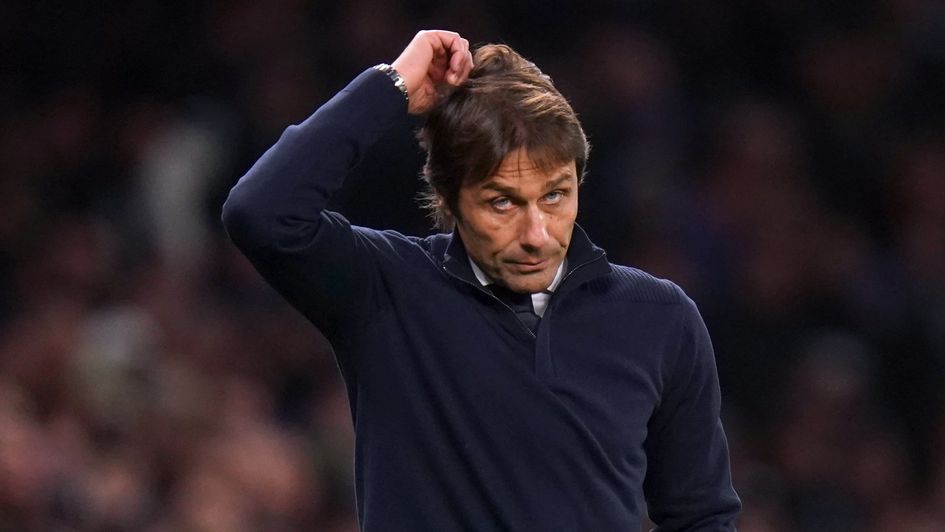On Friday morning another report emerged of player unrest under Ralf Rangnick. Another leak from the Old Trafford dressing room undermining the project.
Another frustrated player going behind the manager’s back to weaken Rangnick’s position and plunge Manchester United deeper into cartoonish chaos.
At Saturday lunchtime another Manchester United game began brightly and ended in a 1-1 draw against supposedly inferior opposition.
Another performance of timidity that lacked any of the hallmarks of Rangnick’s tactical instructions. Another match played out in the Ole Gunnar Solskjaer style of individualism.
Surely, at some point the penny will drop and the players will realise these two things are connected; will realise that complaining to the media that Rangick’s methods are “old-fashioned” and aren’t working because they are “built around improving organisation and shape with less emphasis placed on sessions designed to hone particular skills” is laughably back to front.
Man United 1-1 Southampton (xG: 2.44-0.68)
— Sporting Life Football & Infogol (@InfogolApp) February 12, 2022
More frustration for Ralf Rangnick's side.
They restricted the opposition to low quality chances but couldn't take theirs at the other end. pic.twitter.com/fWbxNRI9HH
Shooting drills might be more fun, lads, but they will not win you football matches.
If the United players needed a lesson in what organisation and shape can do, then they received it here from a Southampton side who played with the dexterity, bravery, and sophistication that flows when the precise instructions of your head coach are followed.
Considering the striking similarities between the tactical philosophies of Rangnick and Ralph Hasenhuttl, the difference between the two sides at Old Trafford was particularly poignant.
United’s early promise quickly fades
As usual, United appeared to follow Rangnick’s instructions for the first 20 minutes or so – and then decided they couldn’t be bothered anymore.
Having studied Southampton’s high defensive line and their off-the-ball shape – sit off the centre-backs, surround the deepest midfielders to block passing lanes through the middle – Rangnick clearly told his players to make lots of runs on the shoulder of the defensive line and hit them with direct passes.
United continually played longer balls down the wings, avoiding the boxed-in Scott McTominay altogether while getting Rangnick’s dual eights (Paul Pogba and Bruno Fernandes played side-by-side in a 4-3-3) to drift into the channels in order to receive the pass and set Marcus Rashford or Jadon Sancho away.
It worked numerous times in the opening quarter of the contest, leading directly to Sancho’s opener.
But we all know what happens next. United, as ever, decided not to press their opponents but instead to hold a deep defensive line and shuffle awkwardly across in a flat 4-5-1.
Seventeen times leading this season for Manchester United.
— Sporting Life Football & Infogol (@InfogolApp) February 12, 2022
‣ 11 wins
‣ 5 draws
‣ 1 defeat
That's 13 points dropped from winning positions - 4 of those coming this week alone.
📉 #MUFC | #MUNSOU pic.twitter.com/XSC3lF07eY
Is it tiredness? Laziness? Or are they sending the manager a calculated message of disrespect?
It’s certainly baffling to see a team managed by Rangnick – considered to be one of the godfather’s of gegenpressing – presiding over such passivity.
It allowed Southampton to build their way back into the game, their pinpoint possession coming under no pressure at all until they were in the opposition half.
And it explains why United so often fail to win despite taking the lead, a familiar story for which Rangnick has no answer – and perhaps no authority to address.
Southampton’s tactical complexity outfoxes United
Saints were everything United were not: compact between the lines, ensuring a compressed shape that prevented their opponents from being able to take advantage of attacking transitions; calm and controlled in possession; and moving together with a functionality that speaks to the hard work drilled in training. Yes, that’s right: hard, sometimes boring, work.
A tell-tale sign of a tactician’s set-plays paying dividends is, counter-intuitively, what it looks like when a pass goes wrong. At United, it will be a player dallying on the ball for too long without options, or a Hollywood pass – of pure individualism – going astray.
For Southampton, as would happen on occasion on Saturday, it is a one-touch, no-look pass that goes to nobody at all, running harmlessly out of play.
The team’s shape, movement and passing patterns are so well coached that players have it in muscle memory to perform a certain action: I know he will be in that position, and if there is nobody there it is somebody else’s mistake.
Hasenhuttl’s 4-2-2-2 is about the targeted pressing traps and the prepared three-point passing triangles, but it’s also about reacting to opposition threats and adapting.

PPDA = Number of Passes made by Attacking Team / Number of Defensive Actions
The PPDA metric is calculated by dividing the number of passes allowed by the defending team by the total number of defensive actions; both values will be calculated with reference to a specific area of the pitch.
Here, the aim was clearly to take advantage of the spaces behind an increasingly-isolated McTominay by getting the ball into left winger Mohamed Elyounoussi as he ghosted unseen into central areas.
He did this again and again in the first half, providing a line-breaking pass to move Saints into the final third, and the tactic eventually told in the second – leading directly to the equaliser.
Other standout performances include Kyle Walker-Peters and Armando Broja, although to a man Southampton were organised and efficient. It was, in short, what a real team looks like.
Rangnick’s kitchen sink 4-4-2 betrays United’s problems
By the final whistle United may well have deserved to win the game (they ‘won’ the xG battle 2.56 – 0.74) having exerted extended pressure on the Southampton goal for a final 20 minutes – once Rangnick abandoned his tactical principles and threw the kitchen sink at it.
'We had big chances in the last 20 minutes to score again...'
— Sporting Life Football & Infogol (@InfogolApp) February 12, 2022
'...the Expected Goal ratio (2.44-0.68) was clearly in our favour, but we didn't get the result we wanted to'
Ralf Rangnick on Man United's 1-1 draw with Southampton.
Interactive shot map → https://t.co/tOpoPloyVX pic.twitter.com/Xs7jI3byQw
His move to a 4-4-2, mimicking Southampton’s shape, saw Pogba and Fernandes as an unlikely midfield partnership in a wildly attacking formation.
But even if they had grabbed the winner, United fans should not have been going home happy.
A weirdly hesitant defensive shape; an even weirder absence of pressing; a wafting and individualistic performance right up until all the star forwards were hurled onto the pitch together: this was a Solskjaer display, almost three months after he was sacked.
Is Rangnick to blame for the lack of progress? Surely not.
Given all the leaks to the press, and watching United’s senior players huffing and moaning at the referee in the final tempestuous moments at Old Trafford, it is hard to lay blame anywhere other than the men out on the pitch.
A culture of ego, self-righteousness, and indiscipline has been allowed to fester at the club.
Rangnick clearly does not have the authority to change it. But judging by the togetherness and the sophistication of this away team, judging by the mutual respect and the hard work it must have taken to climb back from a 9-0 defeat in this fixture last season to what we saw today, just maybe Hasenhuttl could.







